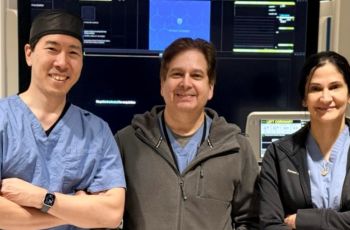
WASHINGTON (Dec. 13, 2018) — Prurigo nodularis is a disabling chronic skin condition characterized by severely itchy, crusty, firm papules and nodules that often occur on the arms and legs, but can appear diffusely on the body. The pathogenesis of prurigo nodularis is poorly understood, as this condition has been associated with a broad array of primary skin and underlying medical diseases affecting the liver, kidneys, and blood.
Regardless of the cause of these lesions, impact on quality of life for these patients can be tremendous, as the itch associated with the lesions can both aggravate and initiate stress, further perpetuating the itch-scratch cycle and induce further lesion formation. Many of the treatment options, including topical agents, phototherapy, and systemic immunomodulatory drugs, show limited promise due to side effects and low efficacy.
A team at the George Washington University (GW) has conducted a systematic review of clinical studies investigating prurigo nodularis treatment published between 1990 and the present that include at least five subjects.
“Currently, there is a lack of targeted pharmacologic therapy for prurigo nodularis and all current treatment approaches utilized show variable success,” said Adam Friedman, MD, professor of dermatology at the GW School of Medicine and Health Sciences and senior author on the study. “We wanted to provide a summary of evidence-based treatments to highlights promising directions and also underscore areas that require improvement.”
Friedman and his team looked at 35 studies with differences in factors such as the number of subjects and the delivery of the treatment. They gave a score to each study, ranking its efficacy and consistency against prurigo nodularis.
In the review, the team found the most promise in emerging treatments, such as neurokinin-1 receptor antagonists, part of a drug class used to treat nausea and vomiting associated with chemotherapy. The receptor is a target of substance P, a mediator of itch and a probable pathogenic agent of prurigo nodularis.
“By identifying which current and future therapies are effective for prurigo nodularis, we can gain a better understanding of the biological underpinnings of this disease, and patients will ultimately benefit from better treatment options,” Friedman said. “Our summary not only provides guidance for practitioners with regards to the broad array of off-label therapies in our armament, but also to researchers in identifying the gaps in treatment development.”
The team suggests that higher-powered studies and additional randomized controlled trials are needed to better evaluate treatment options for prurigo nodularis.
The review, titled “A Systematic Review of Evidence-Based Treatments for Prurigo Nodularis,” can be found in the Journal of the American Academy of Dermatology.


